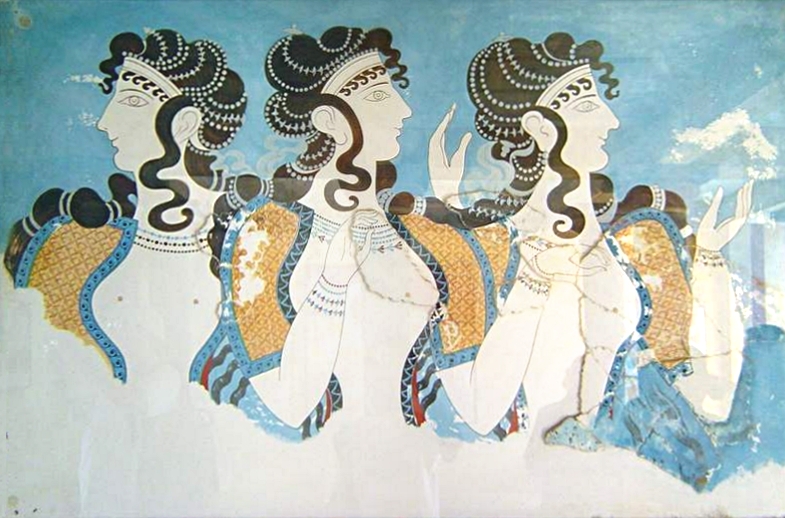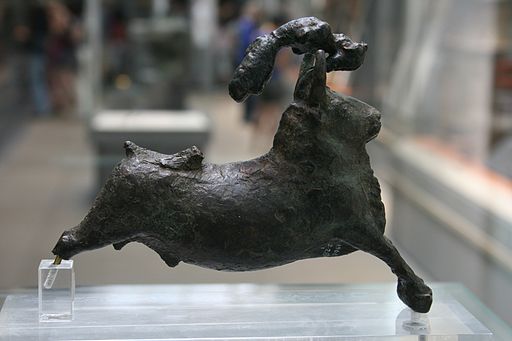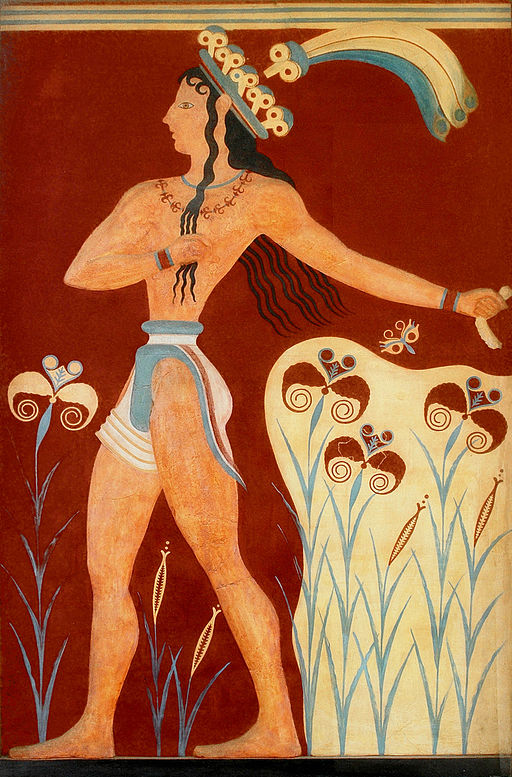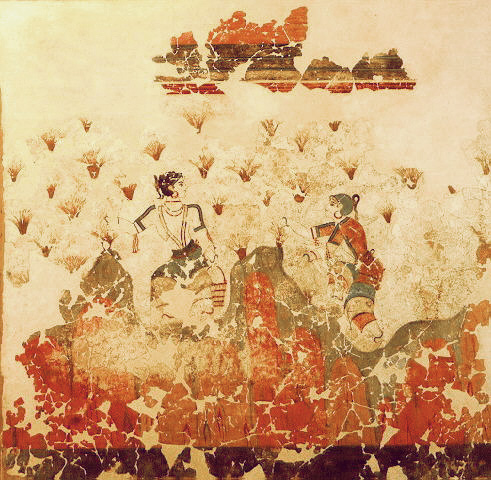I love the Minoans. I love their art, their fashions, their celebration of color, and their obvious joie-de-vivre, or whatever they would have called it. I thought it appropriate to blog about them during this time of year when the weather turns dreary, and when many of us are making resolutions about living more joyfully, and resolving to live a bit healthier.
Named after their legendary King Minos, this sophisticated Bronze-Age civilization emerged on the island of Crete at just about the same time as the ancient Egyptians. The Minoans had impressive plumbing, which I discuss in my Poop book, sophisticated writing, and pretty wild fashions. They seem to have been a peaceful lot–their castles are unfortified and there are no scenes of war in their artwork. They loved colorful clothing and glittery ornamentation. In their artwork they dance, and enjoy bountiful feasts; they play lyres, flutes and trumpets. Scantily-clad athletes, both men and women, jump over bulls, just for fun.
Both men and women wore their hair curled and coiled with falling ringlets to the shoulders. The men’s skirts—all right, we’ll call them tunics—stopped at the knee or, as above, might be hiked daringly higher. Everyone’s clothing was tightly belted at the middle– women (and possibly men as well) may have worn stiff corsets.
The Minoans appeared to have prized fit bodies and narrow waists. Both men and women wore wide, tight belts with rolled edges. Some historians have suggested that these metal belts were riveted to the waist in a person’s youth and were worn for the rest of their lives—incentive to lay off those honey-soaked dates.
The fun seems to have stopped about 1500 BC, when a tidal wave struck the island. After that, the inhabitants of the nearby Greek city-state, Mycaenae, took control. The humorless, belligerent Mycaenaens were considerably less fun than the people over whom they ruled. (Four hundred years later, the Greek epic poet Homer would write about the Mycaenaen siege of Troy in his Iliad.)



